
You’ve got some traffic and know you need to start building your list.
“My biggest regret is not building my list earlier”—said every marketer ever.
Now you need to put a form on your website that matches your style, offers customizations, analytics and integrates perfectly with your email marketing software, CMS and CRM.
It’s quite the list of requirements. But not to worry. We’ve got you covered!
As seasoned marketers, we’ve tested most email capture tools, and in this guide, we share our top picks considering a range of prices and features to match your needs.
At a glance, here are our top picks for the best email capture tools:
Read on to find out what makes these tools stand out from the rest.
What is email capture, and why do you need it?
Email capturing is a process that enables users to complete a form to sign up to your email list. The form can be embedded on your website pages, popups, or a dedicated landing page hosted by your marketing tool.
Having your website visitors subscribe to receive emails from you is the best way to stay in touch, redirect them back to your blog, and sell products and services.
Email is the most effective channel for nurturing leads as it’s direct 1:1 communication. For example, a message in an inbox is more personal than a post on social media.
Like any owned media, an email list of engaged subscribers is an essential asset for your business to have. Email contacts are valued between $100 and $600 per 1000 subscribers, depending on the responsiveness and the type of people on the list.
An email list is a marketing channel you can control rather than relying on a social media platform that could disappear in the morning and have unexpected outages (like Facebook in October 2021).
Methods used to capture emails
There are a variety of ways to capture emails, including:
- Pop-ups (slide-in, overlap, and exit intent) are effective when used in the right ways.
- Website bars and banners which display in the header or footer sections.
- Signup/opt-in forms and surveys can be embedded on any page.
The best practice for capturing emails is to offer something of value to visitors (often referred to as a lead magnet) in exchange for their contact information.
Examples include a free ebook, report, quiz, downloadable checklist, coupon code, and so forth.
A few of the tools on this list have some of these capabilities. For instance, you can create interactive quizzes with Outgrow to entice more prospects to join your email list. So that’s something to keep in mind when making your selection.
Features to look for in email capture software
When comparing email capture tools, below is the shopping list of features we look out for:
- No-code builders for popups and forms that are easy to edit and customize.
- Pre-made templates for different types of goals (newsletter signup, lead generation, upsell, etc.).
- Reports and analytics to track and measure campaign performance.
- A/B testing for which version of your form works best, e.g., split test different popup variations.
- Custom target audiences: choose who you want to see the campaign and when.
- Integration with your email service provider or marketing CRM system.
Now that we have our wishlist let’s dissect the best email capture software.
Our top favorite email capture tools
1. OptinMonster
OptinMonster is a powerful email capture software and conversion optimization tool for bloggers, ecommerce websites, marketing agencies, and small businesses. It can help you achieve pretty much any kind of marketing goal related to lead generation and CRO (Conversion Rate Optimisation).
Pros
- Plenty of options to grow your email list, including methods for turning abandoned visitors into subscribers (forms, popups, slide-ins, overlays, banners).
- CRO features to reduce abandoned carts and boost on-page conversions with technology like exit-intent forms, onsite retargeting, and geo-location.
- User-friendly popup builder with 75+ templates.
- A/B testing
- 500+ marketing integrations, including Sendinblue, Mailchimp, Hubspot, Klaviyo, and more. It also integrates with a variety of CMS platforms like WordPress, Drupal, Joomla, etc.
- Responsive customer support teams.
Cons
- There’s a bit of a learning curve, and its different features take some time to get used to if you haven’t set up popups on a website before. That said, they provide plenty of tutorials (including OptinMonster University) to get you started.
- Standard reports are very basic. So you’ll need to connect to Google Analytics to get more actionable insights.
Pricing
The basic plan for 1 site starts at $14/month billed annually. Pro Plan ($29/month) is the most popular, with a great range of features for up to 3 sites.
2. WPForms
WPForms is a contact form plugin for WordPress with multiple functions. It’s ideal for bloggers, small businesses, or anyone running a self-hosted WordPress site.
WPForms is the most popular WordPress form builder used by over 3 million sites and glowing reviews to match (4.8 on G2 and 4.9 on WordPress).
You can use WPForms to create contact forms, newsletter subscription forms, payments forms, registration forms, polls, and surveys.
WPForms provides an easy way to collect email addresses and link to your email marketing tool or CRM of choice.
Pros
- It comes with a free version (WPForms Lite) which is great for setting up a simple contact form on your website.
- 150+ pre-made templates (from Pro Plan upwards).
- Mobile-friendly email capture forms.
- Drag and drop form builder with no coding experience required—making it a popular choice for beginners.
Cons
- The free version is very light on features. It’s okay to run a basic contact form, but you’ll need a paid plan if you plan to scale. If you’re on a high budget, it’s possible to find a cheaper or even free plugin option elsewhere.
- While there are different pricing tiers, there isn’t an option to add individual modules or add-ons based on what you need.
- No analytics. You’ll need to download a separate plugin like MonsterInsights.
Pricing
The free version is pretty limited, but the Basic plan with all essential form features is very affordable at just $79/year. For integrations with email providers and automation, you’ll need to upgrade to the Plus plan at $199/year.
3. MailOptin
MailOptin is a WordPress plugin for lead generation, email automation, and newsletters. It can also be used to build forms and popups.
With a 4.8 average rating on WordPress, MailOptin is best suited for bloggers, internet marketers, website owners, and eCommerce shops using WordPress.
If you’re seeking a basic no-frills email capture tool that’ll get the job done, MailOptin is a solid choice.
Pros
- As far as free email capture software goes, MailOptin’s free plan goes a long way. The free version comes with 3 opt-in forms which is perfect if you’re on a tight budget or just getting started.
- User friendly when adding slide-ins, popups, sidebars, and content forms.
- Connects easily to different email marketing services like Sendinblue and MailChimp.
- Send new post notifications to subscribers.
Cons
- Limited customization options for forms.
- Lack of templates.
- Only available for WordPress sites.
Pricing
$79 per year for lead generation for 1 site, or $199 per year for lead generation, email automation, and newsletter for 3 sites.
4. Outgrow
Outgrow is an email capture tool that lets you add interactive content to your website to attract leads without any coding.
Outgrow is an innovative option to boost engagement with the ability to run polls, calculators, quizzes, chatbots, surveys, and giveaways.
Outgrow enables you to show product recommendations for more personalized experiences for your online store—making for a handy tool for ecommerce sites.
Pros
- 1000+ templates to improve on-page conversions.
- Smart builder for forms.
- Give personalized answers to customer questions.
- Intelligent analytics and audience segmentation.
Cons
- Calculators can be challenging to configure if you struggle with math.
- On the expensive side for small businesses.
- You can’t remove the Outgrow branding unless on the most expensive business plan.
Pricing
There are 4 different plans ranging from freelancers right up to larger businesses. Get started for $14 a month (paid yearly) with 3 content pieces and 12,000 leads.
Unlimited content pieces start from the Essentials plan at $95 a month (paid yearly).
If you’re stuck for time, Outgrow offers a service to hold the content for you.
5. Jotform
Jotfrom is a simple, user-friendly form builder software to create online forms, collect responses and create fillable PDF documents.
With automated workflows, forms using conditional logic, and the ability to accept payment, Jotforms is a powerful tool to streamline your business data and processes.
Pros
- Test drive the form builder tool directly on the Jotform website without having to create an account.
- 10,000+ free online form templates, including application forms, registration forms, contact forms, feedback forms, booking forms, and request forms.
- Has several different products, including PDF editor, Jotform tables, and Jetform approvals.
- 100+ integrations with all the popular apps like Dropbox, Paypal, Google Sheets, Slack, MailChimp, and Trello.
Cons
- It’s a steep learning curve to master Jotforms.
- The free plan is very limited, with only 100 form submissions per month.
Pricing
The most affordable paid plan starts at $24 per month for 25 forms and 1,000 monthly submissions.
6. Wisepops
Wisepops is a popup tool mainly used by ecommerce stores and marketing agencies.
As far as popup tools go, Wisepops has everything you need to hit your goals, whether it’s converting traffic to leads or sharing timely promotional messages.
Pros
- Integrates with 30+ apps, including the most popular email marketing tools and CRMs.
- Easy-to-use drag and drop builder for popups.
- 50+ popup templates for different scenarios, including abandoned cart recovery and surveys.
- Lots of targeting options from exit intent, scroll depths, URL-based, device type, custom properties, and more.
- Relatively affordable for the features you get.
Cons
- Lacks some customization options compared to some of the bigger players on this list.
- Unlikely to have direct integrations for lesser-known email marketing tools.
Pricing
Wisepops pricing starts at $29/month for 50,000 page views or $49/month for 100,000 page views (which is plenty for a growing business). They also offer a 14-day free trial, no credit card required.
7. Typeform
Typeform offers sleek, modern forms, surveys, and quizzes for personalized lead generation.
With 800+ form templates, you can get creative with collecting leads for the highest conversion rates.
What sets Typeform apart is the ability to create conversational forms that get you more qualified leads.
Pros
- Super easy to use.
- Smooth user experience with a beautiful form interface.
- Conditional logic and lead scoring options.
- Sync to CRM, marketing tools, or Google Sheets. It also integrates with Zapier for more options.
Cons
- Some users have reported that the conditional logic and multiple-choice scenarios can be difficult to understand.
- Premium pricing. The cheaper plans have incredibly basic features, with no access to conditional logic.
Pricing
Pricing starts at $29/month for 100 responses, $59/month for 1,000 responses and $99/month for 10,000 responses. This is one of the most expensive tools on the list.
We hope this article helped you learn about the best email capture tools to decide which app best suits your business confidently.
If you’re still unsure, most tools offer a free trial or a free plan so you can test the features before signing up for a paid plan.
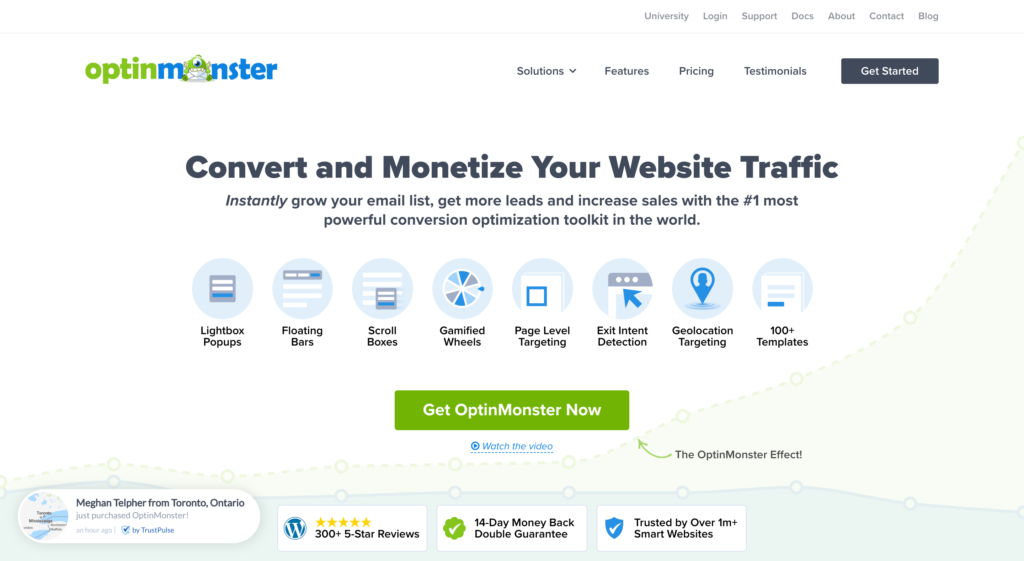
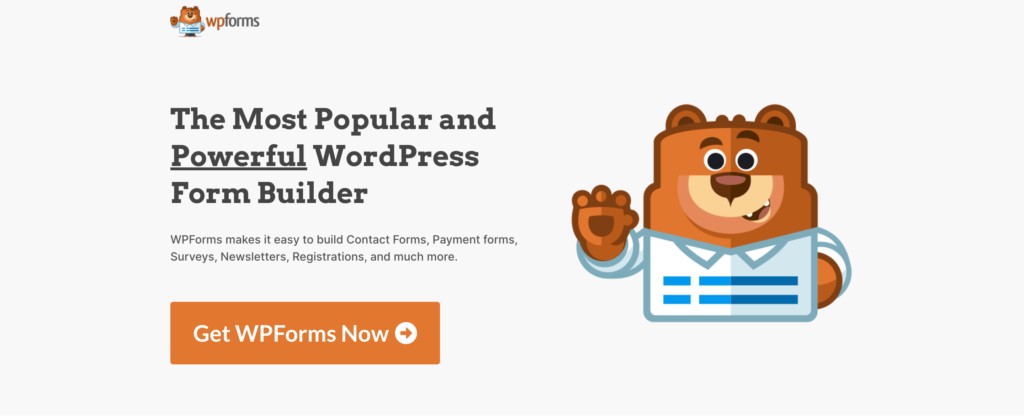
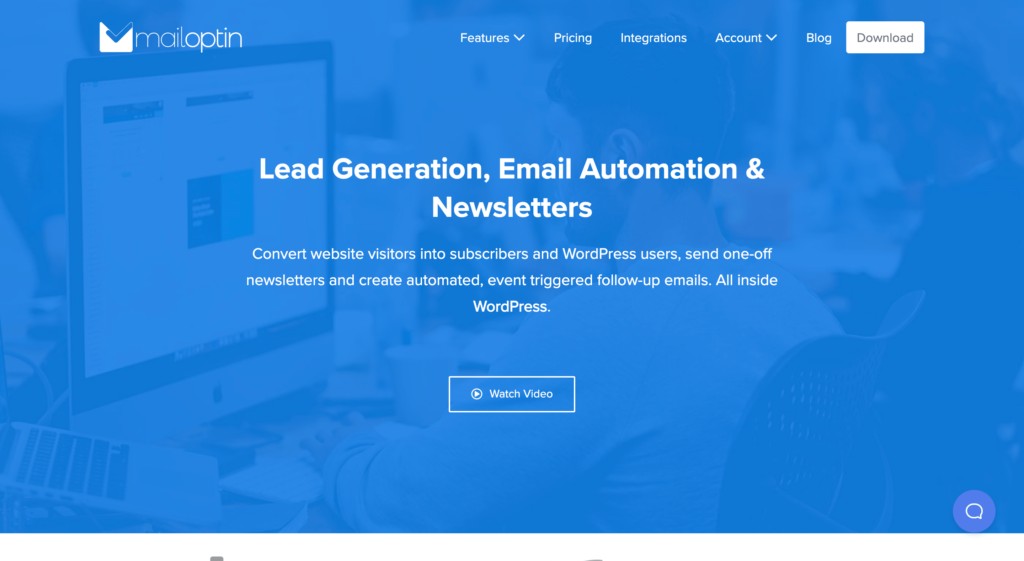
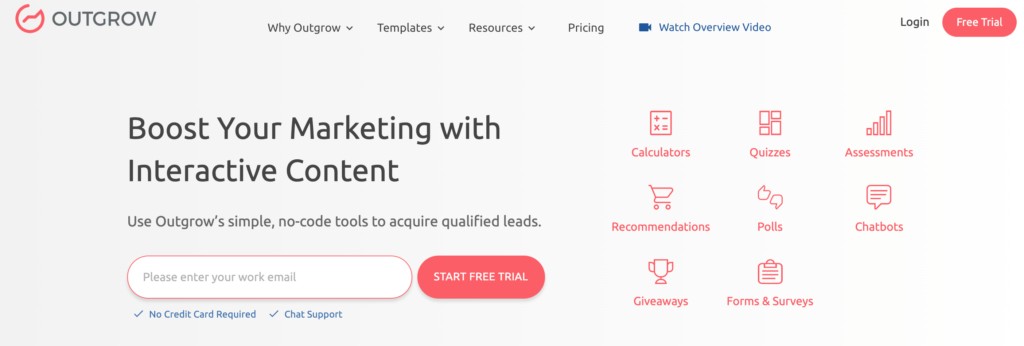
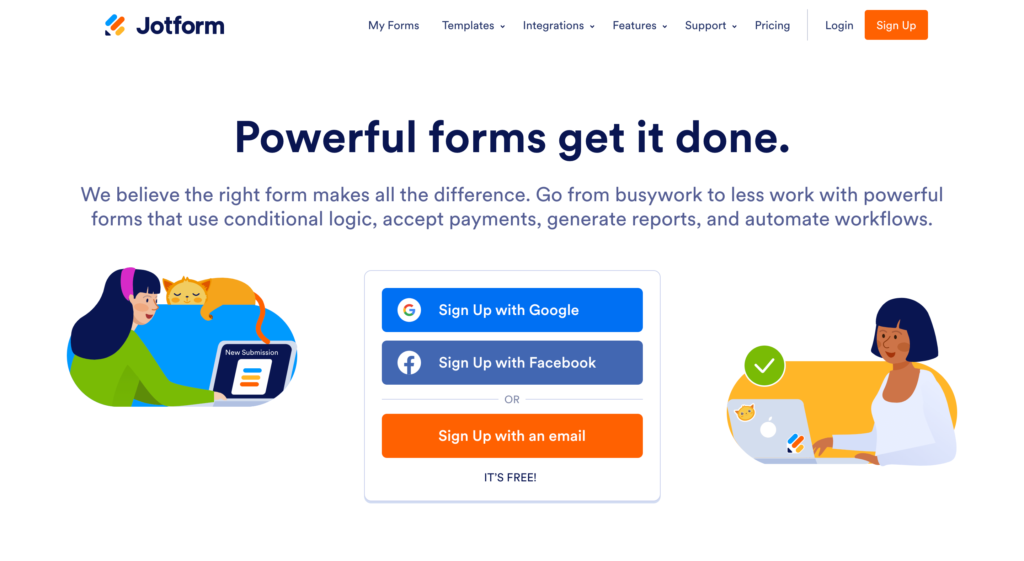
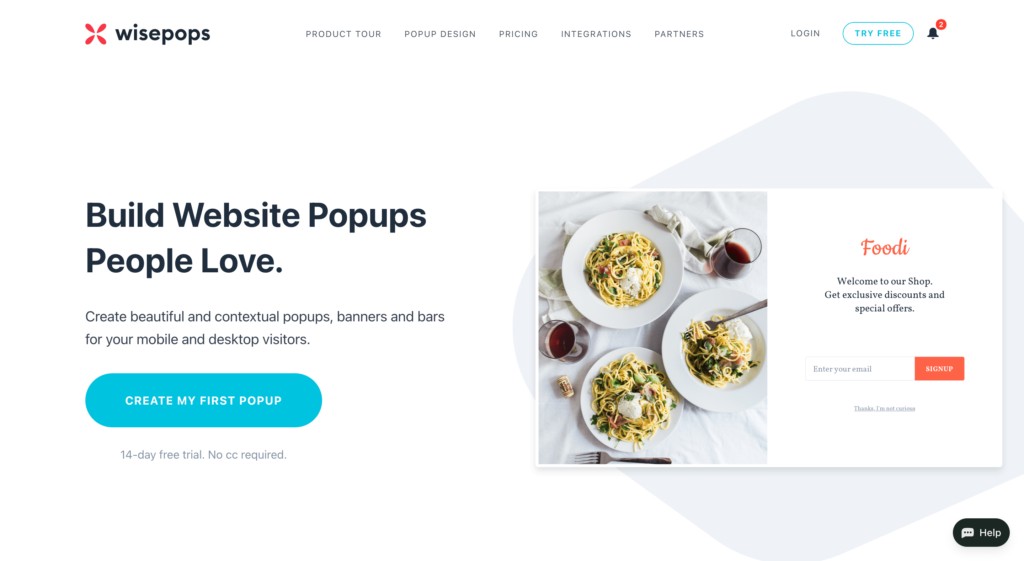
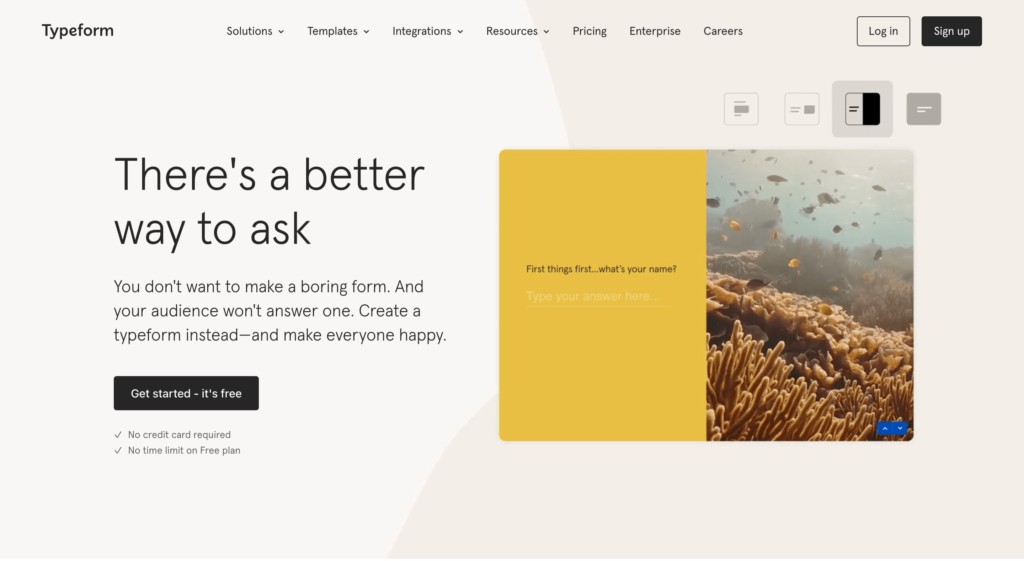
Leave a Reply